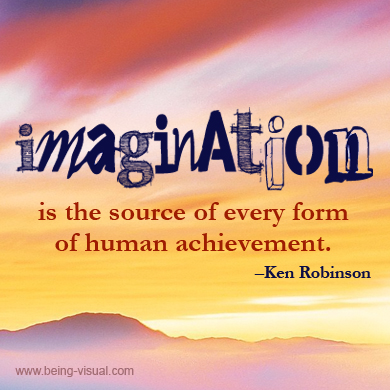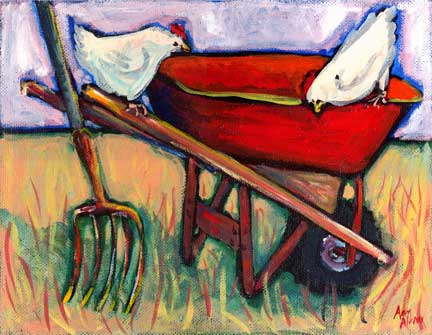AGENDA:
Using photos as writing prompts for a short story:
Go to http://writingfix.com/classroom_tools/picture_prompts.htm
https://plus.google.com/+Photowritingprompts1
Wednesday, November 30, 2016
Thursday, November 17, 2016
Ekphrastic Poetry
AGENDA:
EQ: What is ekphrastic poetry
Ekphrasis is writing about any art form, but in its modern usage, ekphrasis generally refers to poetry that reflects on visual art, and most often painting. In my classroom, I often choose one or two artists for an in-depth study. Once my students are experts about the artists, they each choose a meaningful piece of work to inspire a poem.
http://www.scholastic.com/teachers/top-teaching/2016/04/ekphrasis-poetry-about-art
http://americanart.si.edu/education/pdf/Ekphrastic_Poetry_Lesson.pdf
http://www.english.emory.edu/classes/paintings&poems/classicscene.html
The Red Wheelbarrow
William Carlos Williams, 1883 - 1963
so much depends upon a red wheel barrow glazed with rain water beside the white chickens.
ACTIVITY:
Students select a postcard or artwork
Thursday, November 10, 2016
Where I'm From/ George Ella Lyon poem
If you have finished writing your fiction/nonfiction piece from Writing Territories, you may begin this poem.
AGENDA:
1. Work on "Where I'm From" poems which we will turn into a movie on Tuesday using Moviemaker by adding images and music.
http://www.swva.net/fred1st/wif.htm1. Work on "Where I'm From" poems which we will turn into a movie on Tuesday using Moviemaker by adding images and music.
http://freeology.com/wp-content/files/iamfrompoem.pdf
Look over Examples: https://www.youtube.com/watch?v=gIRfoqB2PhQ
https://www.youtube.com/watch?v=bJ0bHaFsPx8
https://www.youtube.com/watch?v=TVryvxLTIyU
2. Show video of original poem:
https://www.youtube.com/watch?v=ZdnHl_yW1dQ
3. HANDOUT: Where I'm From template--Write your own "Where I'm From" poem in a Word or Google Doc using the model and the template
Wednesday, November 9, 2016
Writing Territories and PROSE
AGENDA:
Continue developing your writing territories.
WRITING:
Select one topic from your writing territories and write a PROSE piece about it.
If you write truthfully, you are writing NONFICTION.
If you make up a story based on your writing territory, you are writing FICTION.
Four primary genres:
FICTION
NONFICTION
POETRY
DRAMA
Continue developing your writing territories.
WRITING:
Select one topic from your writing territories and write a PROSE piece about it.
If you write truthfully, you are writing NONFICTION.
If you make up a story based on your writing territory, you are writing FICTION.
Four primary genres:
FICTION
NONFICTION
POETRY
DRAMA
Tuesday, November 8, 2016
Monday, November 7, 2016
Writing Territories
Use 12 pt. font Times New Roman
MLA Heading (in left hand corner):
MLA Heading (in left hand corner):
Your name
Teacher name
Course name (CW7)
Assignment/Date
Open a word document. Put an MLA heading on top. Create a full page of YOUR Writing Territories. Save your document.
Writing Territories
Don't try to figure out what other people want to hear from you; figure out what you have to say. It's the one and only thing you have to offer. ~ Barbara Kingsolver
In Collecting Your Writing Territories, Consider . . .and Make Lists of Ideas. Brainstorm what you can write about. Be specific.
memories: early, earlier, and recent favorites, now and then
obsessions pets, now and then
idiosyncrasies teachers, now and then
problems places: school, camp, trips, times away with friends and relatives
dreams hobbies
itches sports
understandings music
confusions games
passions books
sorrows poems
risks songs
accomplishments movies
fears writers and artists
worries food
fantasies pet peeves
family, close and distant beloved things-objects and possessions, now and then
friends, now and then all the loves of your life
fads
Adapted from Lessons That Change Writers by Nancie Atwell
Other ideas:
http://smoran.ednet.ns.ca/writing/writing_territories.htm
Other ideas:
http://smoran.ednet.ns.ca/writing/writing_territories.htm
Welcome
Welcome to SOTA and Creative Writing 7
Why Art?

"By awakening our imagination, art intensifies and complements our own experience. Art represents people, cultures, values, and perspectives on living, but it does much more. While bringing us pleasure, art teaches us. While reading or contemplating a painting our minds go elsewhere. We are taken on a journey into a world where form and meaning are intertwined.
Form matters and gives pleasure. How a work of art is organized — its technique, its verbal or visual texture, its way of telling — gives pleasure. So does the inextricable relation between form and content. The form of imaginative art, as well as the form of well-written non-fiction, organizes the mess (if not the chaos) of personal life as well as that of external events. Form not only organizes and controls art but also other bodies of knowledge within the humanities. Form imposes structure that our own lives — as we move from moment to moment through time — may lack.
Narrative — sequential telling — imposes form as it orders and gives shape. Indeed, in the sense that each of us is continually giving shape to the stories we tell to and about ourselves, there is continuity between what we read and see and our own lives. Put another way, what we read teaches us to find narratives within our own lives and hence helps us make sense of who we are. Our seeing shapes and patterns in stories and other kinds of art helps give interpretive order — in the form of a narrative that we understand — to our lives. We live in our narratives, our discourse, about our actions, thought, and feelings.
While there is always a gulf between imagined worlds and real ones, does not the continuity between reading lives and reading texts depend on our understanding reading as a means of sharpening our perceptions and deepen our insights about ourselves? Reading is a process of cognition that depends on actively organizing the phenomena of language both in the moment of perception and in the fuller understanding that develops retrospectively."
Daniel Schwartz, Huffington Post
Classroom expectations
1) Treat others as you would like to be treated. RESPECT ALL NOUNS (People, objects, ideas)
2) Respect other people and their property (e.g., no hitting, no stealing).
3) Laugh with anyone, but laugh at no one.
4) Be responsible for your own learning.
5) Come to class and hand in assignments on time.
6) Do not disturb people who are working.
In addition:
No food or drink in classroom or computer lab.
No cell phones.
2) Respect other people and their property (e.g., no hitting, no stealing).
3) Laugh with anyone, but laugh at no one.
4) Be responsible for your own learning.
5) Come to class and hand in assignments on time.
6) Do not disturb people who are working.
In addition:
No food or drink in classroom or computer lab.
No cell phones.
Friday, November 4, 2016
Thursday, November 3, 2016
How are the Arts Related?
Common Areas of Learning in Dance, Drama, Music, and Visual Arts
The four arts education subjects overlap in many areas, including
The four arts education subjects overlap in many areas, including
- • creative processes and structures
- • arts as means of expression and communication
- • the arts as means of exploration (e.g., self, ideas, societal issues)
- • thoughts, images, and feelings evoked by and represented through the arts
- • cultural, social, and historical contexts for the arts
- • art forms that incorporate elements of more than one arts subject area (e.g., musical theatre, soundscape, dance drama, tableau, film)
- • use of one art form to enhance another (e.g., use of music in drama, use of visual arts design principles in dance sets and costumes)
- • specific skills and elements such as − pattern, line, and form (e.g., choreographic form based on musical form) − metre, rhythm, and tempo − texture and harmony − relationships and dynamics − use of space
- • use of production elements and media
- • rehearsal and performance process
- • roles and responsibilities
- • common arts themes and strategies (e.g., Festivals and Celebrations, Children’s Entertainment, the Arts in BC and Canada, the Arts in the Media)
Subscribe to:
Posts (Atom)
